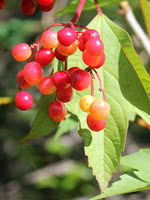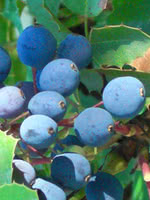Mon-Fri 9am - 5pm Mountain time
Highbush Cranberry vs Creeping Oregon Grape
Viburnum opulus var. americanum (trilobum)
Mahonia repens
CUSTOM GROW
Highbush Cranberry produces attractive white flowers in late June and bears edible fruit that matures to a bright red colour in the late summer.
This shrub, native to much of Canada, is fast growing, and its fruit can be eaten raw or cooked into a sauce.
Creeping Oregon Grape is an excellent ground cover plant with attractive, dark green, holly-like leaves. It maintains its leaves throughout winter, which turn mauve, rose, and rust-colored. Clusters of bright, yellow flowers develop into dark, blue-purple edible berries ideal for juice or wine.
Highbush Cranberry Quick Facts
Creeping Oregon Grape Quick Facts
In row spacing: 0.6 m (2.0 ft)

